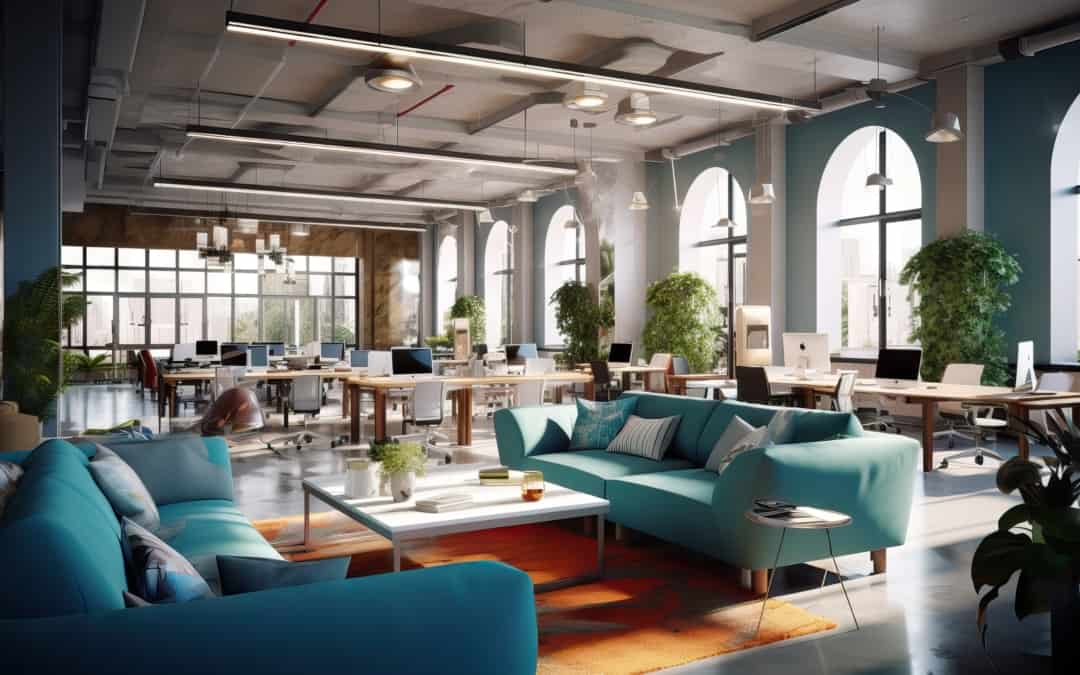Designing Effective Collaborative Space in Your Office
Designing collaborative space in your office is a strategic project that can impact your team’s productivity and innovation significantly. Here’s a structured guide to help you create an effective collaborative space:
What Is Collaborative Space?
Before jumping into what goes into a collaborative space, it’s important to know what a collaborative space is—as well as who it’s for. Collaborative space in an office is intentionally designed to facilitate teamwork, communication, and innovation and to boost problem-solving among employees. The design moves away from traditional workstations and conference rooms, encouraging open collaboration and idea exchanges.
Key features include an open layout, flexible furniture, technology integration, diverse seating options, and inclusive design to cater to various work styles and preferences.
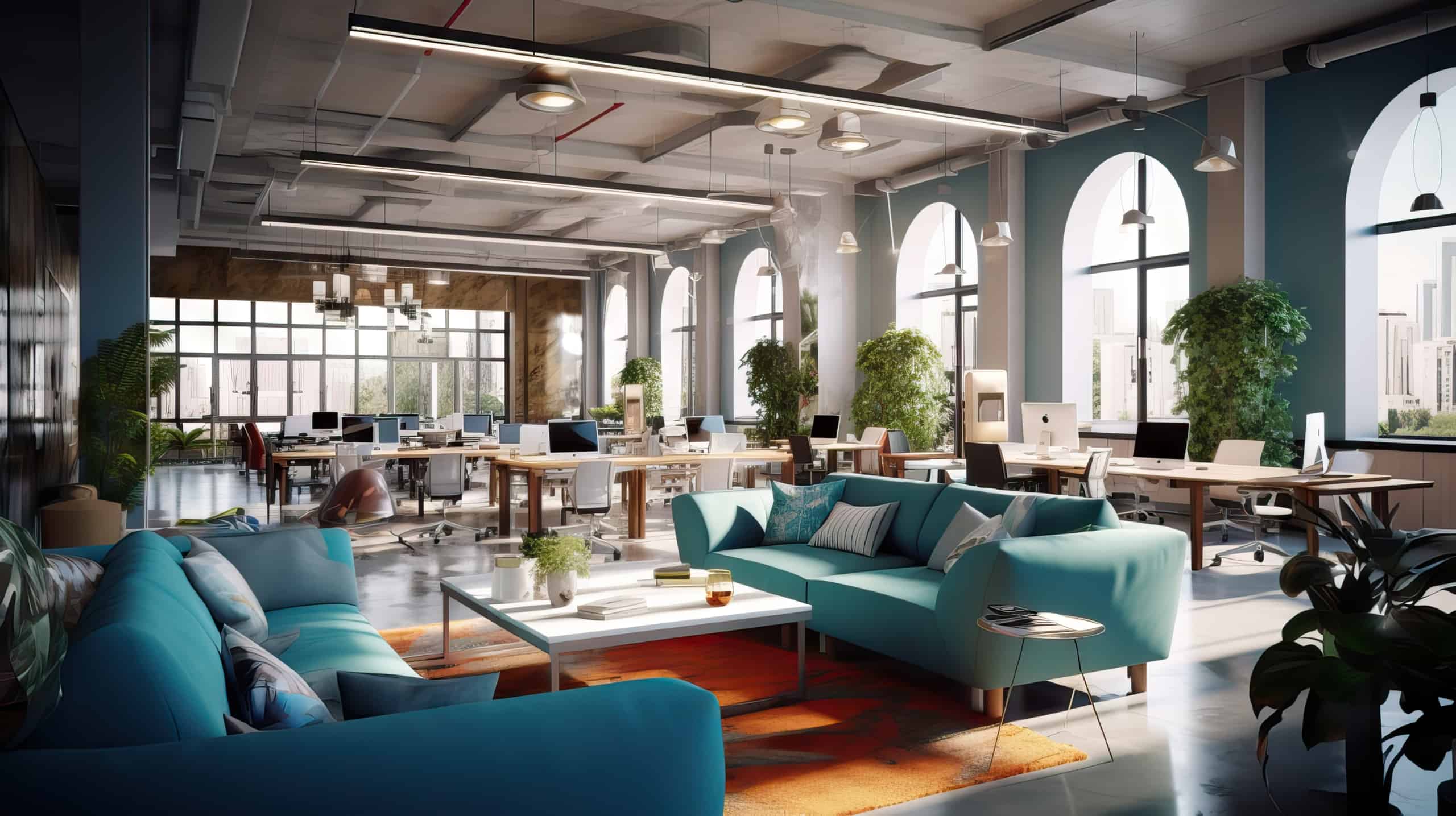
Who Will Meet in the Space?
Collaborative spaces are versatile and can be utilized by various teams across different departments. Frequent users include project teams, creative and design teams, development and IT teams, marketing and communication teams, sales teams, HR teams, cross-functional teams, innovation and research teams, training and development teams, and customer support teams.
The goal of collaborative space is to foster a culture of collaboration and communication across the organization.
Collaboration spaces are not often used for sensitive meetings or important executive meetings that must happen behind closed doors. Consider balancing open areas that are suitable for group discussions with private or semi-private spaces for focused work or confidential and sensitive conversations. Incorporate meeting pods, huddle rooms, or phone booths to cater to different meeting requirements.

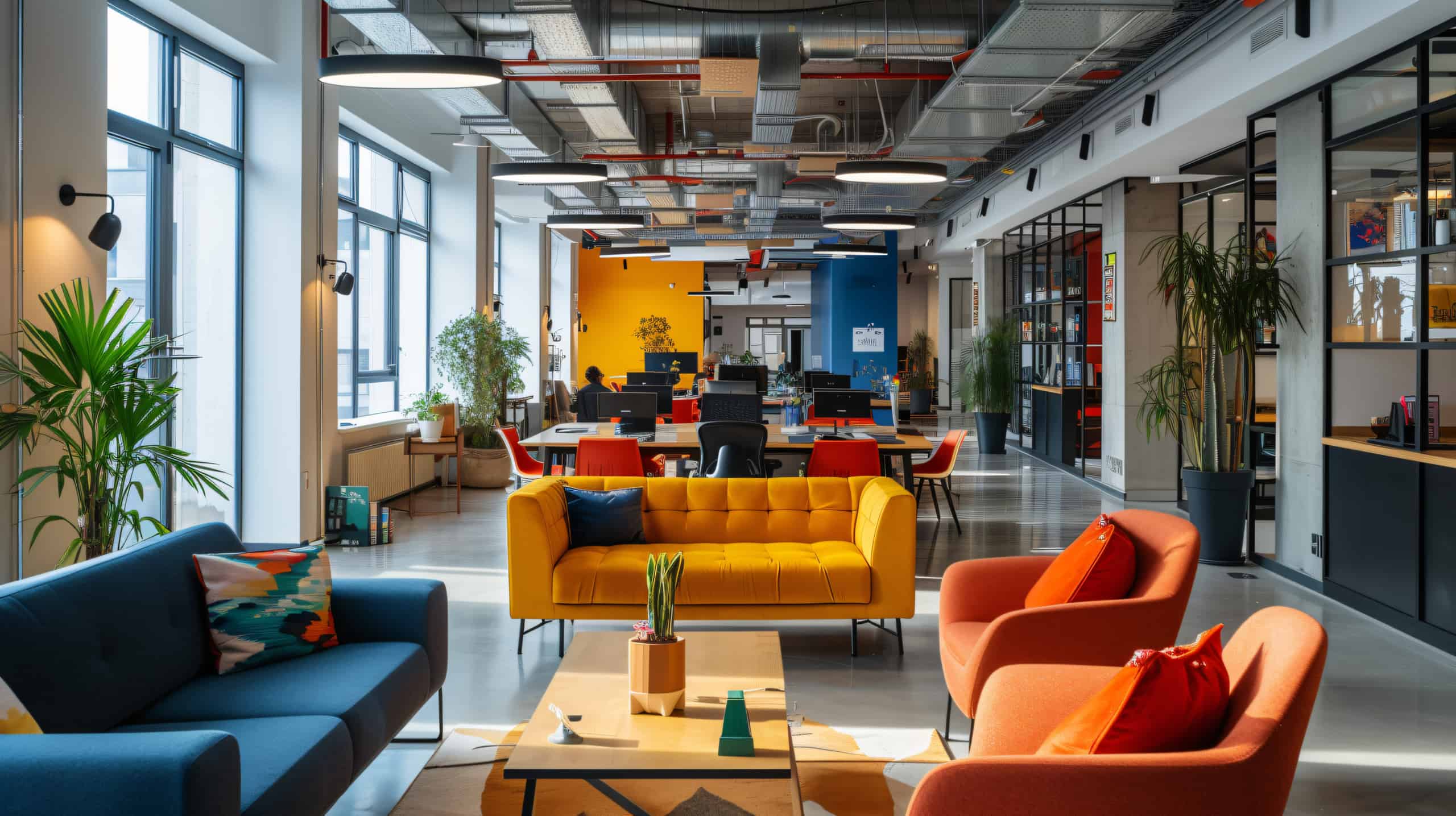
What Are the Goals of Collaborative Meeting Spaces?
The primary goals of collaborative meeting spaces are promoting creativity and innovation, improving communication, supporting different work styles, increasing employee engagement, boosting productivity, attracting and retaining talent, and providing adaptability and flexibility.
Associated benefits include increased innovation, accelerated problem-solving, enhanced team dynamics, higher employee satisfaction, greater agility and adaptability, positive organizational culture, efficient resource use, and knowledge-sharing. Fun and welcoming collaboration spaces are attractive to employees, as they provide breakout space away from and apart from typical seating arrangements.
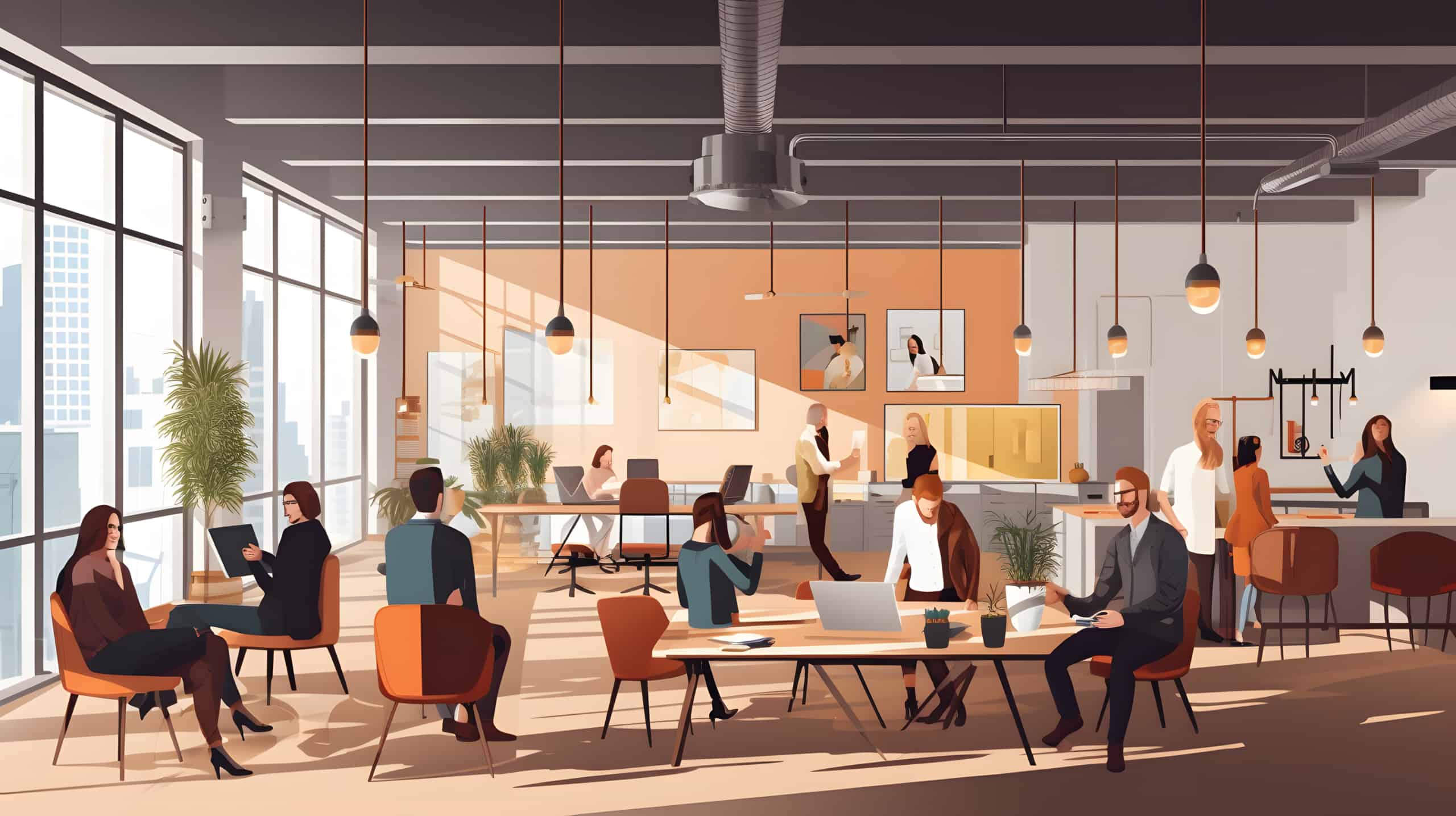
What Goes into Creating an Effective Collaborative Space?
Understand Your Team’s Needs
Before diving into the design process, take time to understand the specific needs and preferences of your team. Consider work styles, tasks, and the tools employees use on a regular basis. Collaboration spaces should be multifunctional so that many teams can utilize the space.
Technology Integration
Equip the space with essential technology tools, including video-conferencing equipment, interactive whiteboards, and power outlets for charging devices. Include the necessary tools for meetings, presentations, and collaborative discussions, such as a projector or large screen.
Create an Aesthetically Pleasing Environment
Incorporate natural light, greenery, and inspiring visuals into the design. Utilize writable surfaces, like whiteboards, to facilitate brainstorming sessions and collaborative idea-generation. Consider color psychology for a warm and welcoming atmosphere.
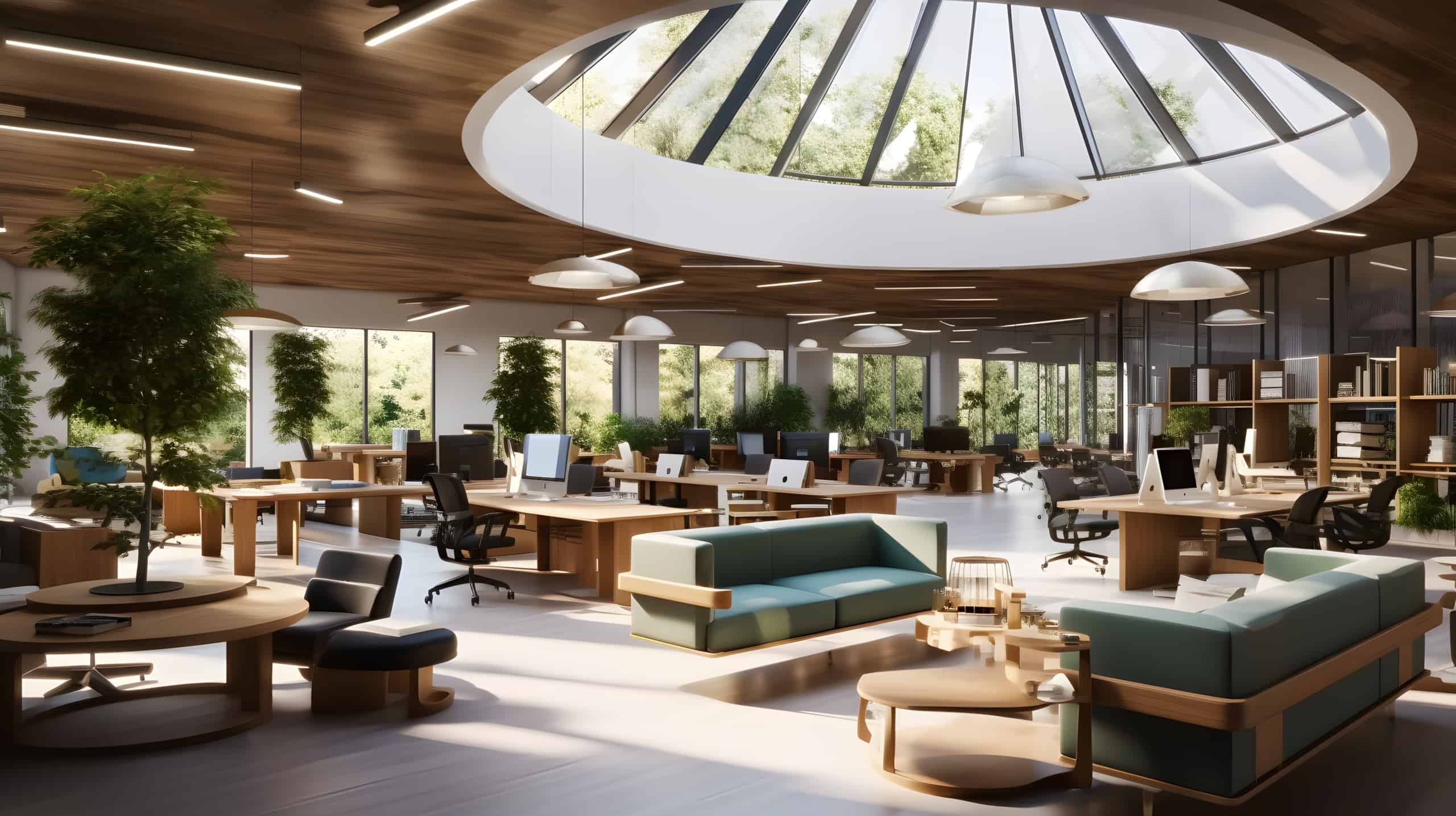
Flexible and Diverse Furniture Arrangement
Opt for modular and flexible furniture that can adapt easily to different group sizes and activities. Include a variety of seating options, such as comfortable lounge chairs and versatile tables, to cater to individual preferences.
Importance of Breakout Areas
Design breakout areas within the collaborative space to encourage informal discussions, breaks, and socializing. Consider amenities like coffee machines to enhance the space’s appeal. The space can be utilized for quick chats to boost morale.
Acoustic Solutions
Implement acoustic solutions such as baffles, wall tiles, rugs, or curtains to manage noise levels and create a comfortable working environment.
Clear Usage Guidelines
Letting teams reserve the space makes it clear when the space is open for use or off limits.
The key is to strike a balance between collaborative and focused workspaces while considering the unique needs of your team. Involve team leaders and managers in the design process before final decisions are made to ensure that the space is functional across the organization.
With thoughtful planning and implementation, you can create a collaborative space that is not only visually appealing but also highly functional, supporting a culture of teamwork and innovation within your organization. Collaboration promotes the sharing of knowledge and expertise among team members, leading to continuous learning and development.
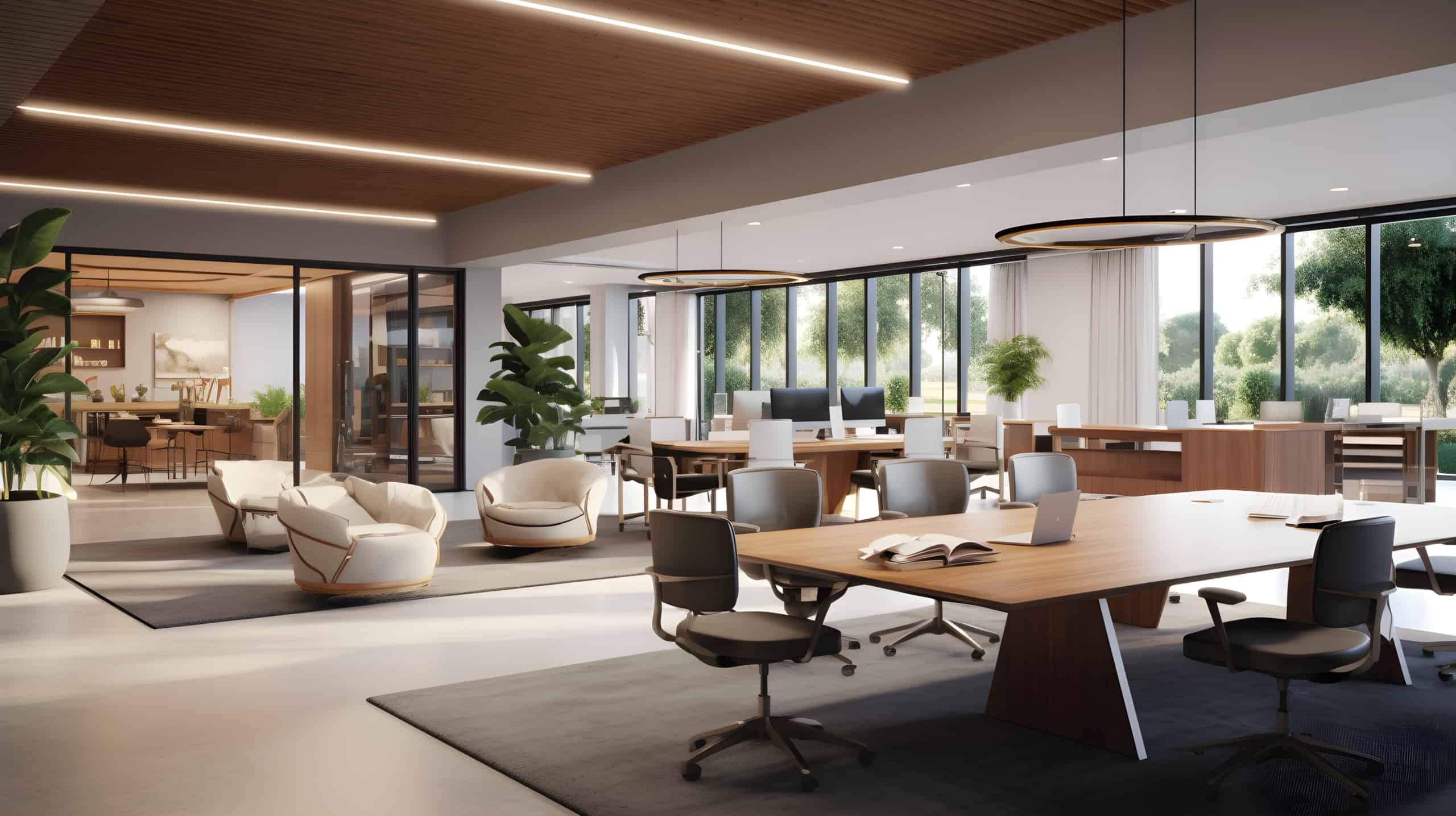
When you have completed a collaborative space design project, you are on your way to a dynamic and adaptive workplace that promotes cooperation, creativity, and productivity. The associated benefits contribute to a positive work culture and can have a direct impact on the success and competitiveness of your organization.

